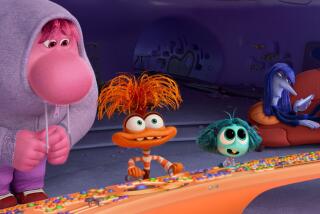Show Business and the Fear of Failure : Let’s Replace TV Audience Testing With Ingenuity and Daring
- Share via
Item--A story by Los Angeles Times staff writer Robert W. Welkos (“On the Ropes,” Calendar, March 17) regarding the poor box office of two recently released Columbia pictures, “Gladiator” and “Radio Flyer,” points out that “Radio Flyer” was tested more than a dozen times. Based on those tests, improvements were made and the film was released. Now the film appears to be a box-office flop.
Item--The same story points out that during screenings for “Gladiator,” test audiences gave the movie a 95 out of a possible 100 score. Now in release, this film appears to be a box-office flop.
But there’s a greater wasteland of testing: television.
Within the next ensuing weeks, the four networks will reveal their fall schedules. Each new program will be heralded as a most-likely success because it tested well . . . it tested extremely well! Testing--the bane of programming. It’s amazing how we still cling to it.
How many of us would visit a doctor who loses more patients than he cures? How many would heed a weatherman whose forecasts are, in the main, wrong? How many would seek a dentist whose extractions far exceed the teeth he saves?
Yet, nearly every network program that sees the light of television has been tested by focus groups and other mass devices. And each has passed its test with flying colors.
However, once they hit the air, more programs fail than succeed, contradicting the test findings. Why do we continue to resort to TV program testing when its failure is so monumental? Why do we continue our patronage of doctors who more often bury us than heal us?
The responses to these questions from various program executives have only elicited vagaries. A young aide did tell me that it was a crutch, an excuse, to explain the failure of a program: “We did test it! The folks did like it! It’s a puzzle!”
The fact remains, whether it’s an excuse or a puzzler, testing does not work. At the very least, it is not working today. And the painful truth we resist confronting is that testing must be replaced by instinct and insight and experience.
Today’s TV viewers are restive, they are bored, they are blase. Their choices are no longer limited to the standard TV stations. There are four networks, there are cable alternatives galore, there are VCRs and there are the ubiquitous clickers that viewers use often, particularly at the outset of commercials.
Yet programmers mostly wring their hands and do nothing but repeat the familiar, which more often fails than succeeds. Failure can either inspire dread, which leads to passivism, or it can inspire hope, which leads to daring.
Perhaps TV viewers are lost to the networks, but perhaps not. Perhaps they can be jolted out of their indifference by startling, innovative and daring programming that can also conform to the economic needs of today’s TV.
Isn’t it time we producers and programmers resort to our own ingenuity and daring? Sure, we’ll err from time to time, but hardly any worse than we’re doing now. We have little to lose, ‘cause else we’re certain to lose anyway.
More to Read
The complete guide to home viewing
Get Screen Gab for everything about the TV shows and streaming movies everyone’s talking about.
You may occasionally receive promotional content from the Los Angeles Times.






